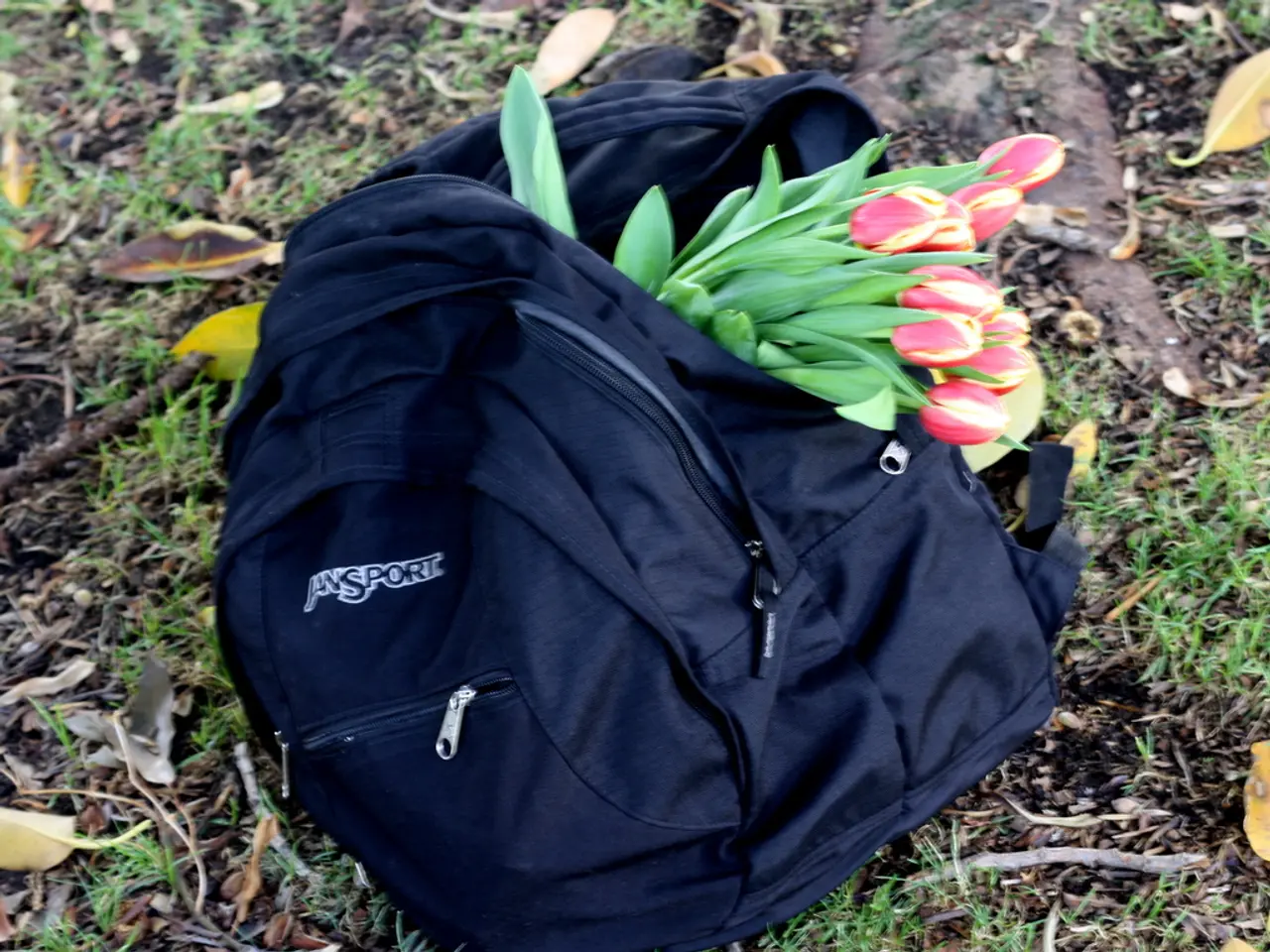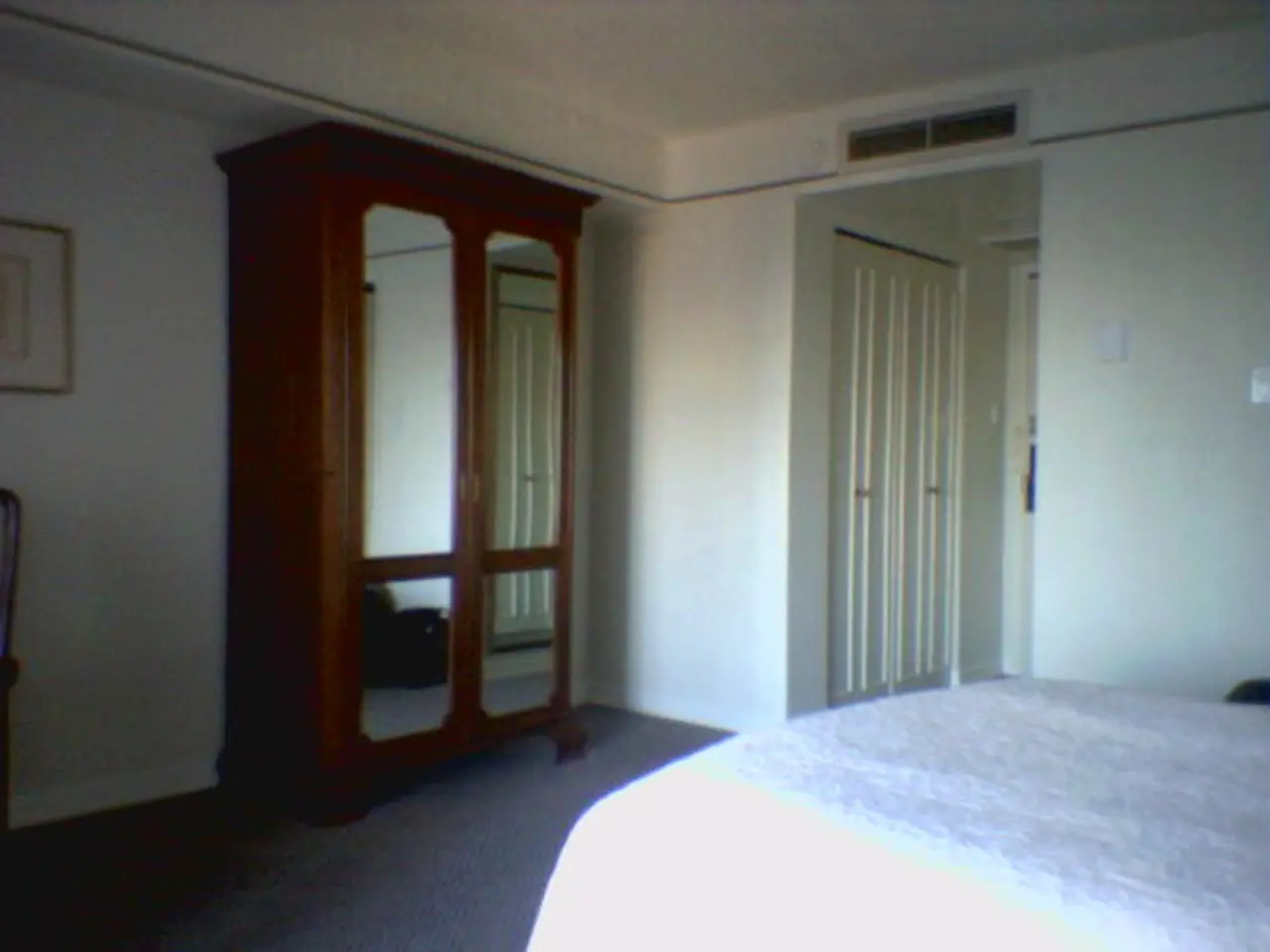Landscaping Fabric: Balancing Advantages and Disadvantages for Weed Suppression
Landscaping fabric, a type of material made from tightly woven plastic fibers with perforated holes, has become a popular choice for gardeners looking to prevent soil erosion and control weed growth. This permeable material allows air and moisture to pass through, retaining the ideal soil moisture and temperature, while also blocking out the sunlight weeds need to grow.
One of the key advantages of using landscaping fabric is its ability to help keep the soil nice and moist for plants to grow, especially during dry seasons. By preventing evaporation and reducing water runoff, it helps conserve water and promotes healthier plant growth.
However, it's important to note that landscaping fabric may inhibit the breakdown of garden matter and affect the nutrient levels in the soil. For this reason, it's crucial to choose a permeable, durable fabric that allows water and air to pass but blocks light effectively. Some landscaping fabrics are biodegradable, but these break down more quickly than non-woven polyester or polypropylene fabrics.
When installing landscaping fabric, thorough site preparation is essential. This includes completely removing existing vegetation, including grass and perennial weed roots, rather than placing fabric over live grass. Soil grading and amendment should also be done before installation, as it's difficult to improve soil quality once the fabric is installed.
Proper fabric placement is also crucial. Overlap fabric edges by at least 6 inches with seams running perpendicular to slopes to reduce erosion. Secure fabric using landscape staples every 3-4 feet along edges, seams, and in high-traffic or windy areas to prevent shifting.
Always cover landscaping fabric with 2–4 inches of mulch or gravel to protect it from UV damage and enhance appearance. Organic mulch enriches soil but may allow weed seeds to germinate on top, so regular maintenance is needed.
It's important to avoid installing fabric over existing weeds or grass, as this can lead to root growth through the fabric and tearing, reducing effectiveness. Additionally, consider soil health impacts when using landscaping fabric. While it can help control weed growth for days, months, or years, it may impede soil life by restricting water, oxygen, and nutrient flow, and roots may become entangled in it. For garden beds with plants, frequent monitoring is necessary, and some experts suggest alternatives like organic mulch or biodegradable layers for better long-term soil health.
In summary, effective landscaping fabric installation requires complete site clearing, proper soil prep, overlapping and secure fastening of high-quality permeable fabric, and covering with mulch while balancing weed control goals with soil health considerations. The benefits of using landscaping fabric, such as reduced weed growth and soil erosion control, outweigh the potential drawbacks if installed correctly.
- Incorporating homemade compost into the soil, in combination with using landscaping fabric, can help improve nutrient levels and overall soil health.
- A combination of the 'home-and-garden' lifestyle featuring tasteful landscaping, effective use of landscaping fabric, and prudent plant selection can result in a beautifully maintained, weed-free outdoor living space.




